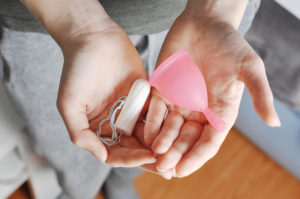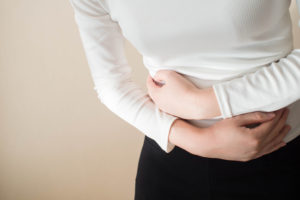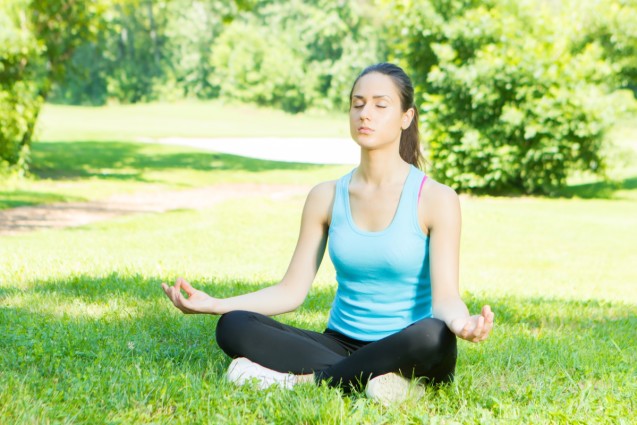By Iris Farrou
29 Jun, 2021
Women's Health
Best gyns in Buffalo, Best OB practices in Buffalo, Best OBGYN Groups in Buffalo, Buffalo OB-GYN, Buffalo OBGYN, Chouchani MD, WNY OB-GYN, WNY Ob-gyn doctors, WNY OBGYN, women's health, women's health tips

Rather more serious than the usual activity-induced fatigue, Chronic Fatigue Syndrome (CFS) or Myalgic Encephalomyelitis (ME/CFS) is a chronic illness that is known to affect more than 1 million Americans. Women are four times more likely than men to be diagnosed with it. Keep in mind that it is different from expected fatigue, as it often disables people from doing simple daily tasks such as showering or dressing and may also confine people to bed.
Along with the general description we are provided about chronic fatigue, we know of three key symptoms:
- ME/CFS is accompanied by fatigue that lasts more than 6 months, and it is not the result of usual effort, nor is it made better when resting
- Symptoms become worse after mental, physical or emotional effort that would not have caused any issues before the illness
- Sleep does not get the job done, as people with ME/CFS may be just as tired after a full night’s sleep, not refreshed
Causes
Medical professionals do not yet know exactly what causes ME/CFS, but speculate it is possible there is more than one cause. It is also assumed that there may be a variety of triggers for the condition, such as infections or changes in the immune system. Patients report that CFS starts after flu-like illnesses or a cold/stomach bug, while others also link it to periods of extreme stress—which can of course affect body chemistry. There are no conclusive results yet, but another scientific hypothesis is that ME/CFS is linked to the virus that causes mono, Epstein-Barr.
Treatment
Because of the inconclusive results on what exactly causes ME/CFS, it is difficult for medical professionals to suggest treatment for it, nor is there a CDC approved treatment. However, it is possible to treat certain symptoms to provide relief for some patients. Since it is not a guarantee, unfortunately many people learn to live with it and manage the symptoms to the best of their ability with the support of their family and friends.
Most commonly, healthcare professionals work with patients to address post-exertional malaise and help patients understand, and find, their limits when it comes to physical and mental exertion and create routines as well as “energy envelopes” to manage their fatigue. Sleep problems can also be addressed with either tips for good sleep habits, over the counter medications, or even prescribed sleep medications. Pain of muscles and joints is also addressed in the same manner, and even alternative medicine may be suggested.
Additional symptoms of ME/CFS may include dizziness, loss of memory and/or difficulty concentrating as well as depression and stress. Keep in mind that experiencing individualized or sporadic symptoms listed here is not a conclusive diagnosis for chronic fatigue, and should you suspect, you may be suffering from it, it is best to reach out to your doctor.
More
By Iris Farrou
21 Jun, 2021
Pregnancy
Best gyns in Buffalo, Best OB practices in Buffalo, Best OBGYN Groups in Buffalo, Buffalo OB-GYN, Buffalo OBGYN, Chouchani MD, Healthy pregnancy, WNY OB-GYN, WNY Ob-gyn doctors, WNY OBGYN, women's health, women's health tips
 Thyroid diseases affect hormone levels and may cause overall hormonal imbalances that ultimately can have an impact on a woman’s fertility. Additionally, women have been found to develop either hyperthyroid or hypothyroid during pregnancy. However, it is untreated thyroid diseases that may have more of a negative impact on a pregnancy and not medicine-regulated thyroid conditions.
Thyroid diseases affect hormone levels and may cause overall hormonal imbalances that ultimately can have an impact on a woman’s fertility. Additionally, women have been found to develop either hyperthyroid or hypothyroid during pregnancy. However, it is untreated thyroid diseases that may have more of a negative impact on a pregnancy and not medicine-regulated thyroid conditions.
What is the difference?
Hyperthyroidism: refers to an overactive thyroid, when your thyroid gland produces too much of the hormone thyroxine. It usually heightens your metabolism, causing an irregular fast heartbeat and often accompanied by unplanned weight loss.
Hypothyroidism: as the name suggests, this is when your thyroid gland is less than regularly active, thus producing less of the hormone thyroxine than your body needs. It may initially not cause any symptoms, but if left untreated hypothyroidism may lead to obesity, infertility, and heart disease.
Thyroid Risks & Pregnancy
You may be at a higher risk for a thyroid condition during pregnancy if:
- You are currently being treated for a thyroid condition.
- Have already had a thyroid condition or have had a child with a thyroid condition.
- Have a family history of thyroid autoimmune conditions, such as Graves’ disease or Hashimoto’s disease.
- Have an autoimmune condition or Type 1 diabetes.
Hyperthyroid and Pregnancy
Untreated or inappropriately treated hyperthyroidism can lead to the following issues during pregnancy, especially affecting the baby:
- Premature birth, before the 37th week of pregnancy.
- Low birthweight, with the baby being born under 5 pounds.
- Goiter, the abnormal enlargement of the thyroid gland as well as general thyroid problems.
- Miscarriage or stillbirth.
Hypothyroid and Pregnancy
Some of the problems untreated hypothyroid can cause for the baby are the same as in the case of untreated hyperthyroid—such as thyroid problems, miscarriage or stillbirth—but there are a few that are different:
- Problems with nervous system developmenta and brain growth, especially when untreated hypothyroid happens during the first trimester.
- Infantile myxedema, which is linked to severe hypothyroid can lead to dwarfism (when an adult person is less than 4ft tall) as well as lower-than-average intelligence and a lack of skills necessary for daily life.
Thyroid Medicine
Whether you are experiencing hyperthyroid or hypothyroid, thyroid medicine is meant to balance thyroid hormones in your body and keep them at the right level. If you are taking thyroid medicine and planning to become pregnant, consult with your doctor for possible adjustments. If you are taking medicine and become pregnant, do not stop taking your medication—as untreated thyroid problems lead to more severe issues than taking the medicine—but do get in contact with your doctor as soon as possible to ensure your and your baby’s health.
Remember that since thyroid diseases are a hormonal imbalance, lack of medicine and proper treatment is what leads to severe, or even fatal, issues during pregnancy; thyroid medication is not likely to harm an expectant mother or her baby.
More
By Iris Farrou
21 Mar, 2021
Menstruation
Best gyns in Buffalo, Best OB practices in Buffalo, Best OBGYN Groups in Buffalo, Buffalo OB-GYN, Buffalo OBGYN, Chouchani MD, Normal menstruation cycle, WNY OB-GYN, WNY OBGYN, women's health tips

When your doctor asks when your last cycle was, there’s no need to jog down memory lane, as you can simply open an app on your smartphone. Cycle tracking apps are helpful with everything from monitoring mood and fertility to alerting us of reproductive system illnesses. If you search for “period tracker” in your app store, the 50+ choices can seem overwhelming.
Here’s a list of favorite cycle tracking apps:
Clue Period & Cycle Tracker
Clue has been accredited by the Obstetrics & Gynecology Journal (ACOG) as the Top Free Period Tracking App, the Best Fertility App by Healthline, and App of the Day Worldwide by the Apple App Store. Clue is female-led and doctor recommended. It lets you log cramps, mood fluctuations, sex drive, sleep schedule, food cravings, and over 30 other categories. The more consistently you log your cycle, the more accurately the app predicts your body’s rhythm. It also alerts you when certain changes or fluctuations may indicate a health issue. Clue’s custom push notifications notify you with shocking accuracy to events like the beginning of your cycle, ovulation, and PMS.
Life – Period Tracker Calendar
This sleek app integrates with HealthKit, allowing you to synchronize your custom data with your phone’s Health App. You can track nutrition, fitness, moods, weight, medication, and more in the most customizable app available. Life also integrates irregular cycle support and allows you to keep separate entries for each symptom so as to easily share it with your physician at a later time. Additionally, you can prevent false alerts about irregularities that may not concern you by personalizing your cycle length. Life is backed and used by licensed physicians, gynecologists and has over 50,000 glowing reviews.
Glow Period and Fertility Tracker
Glow is modern care for your fertility, plus tracking for over 40 different biological symptoms. “Glow Scoops,” a resource section built into the app, has an expansive library of informational articles on topics like egg freezing and menstrual health. You can also export custom PDF reports of your ovulation or fertility health charts to simplify the pregnancy process, and join support communities for issues like IVF, IUI, and natural pregnancy. Glow has a team-based mentality, including generating personal data that your medical care professionals can use to better know your body, and diagnose health issues early and efficiently.
Eve Tracker App
With a recently redesigned Cycle Chart, Eve is a savvy period tracker and sex app for women looking to take control of their health and sex lives. Eve is a spicier type of tracking app that includes the typical interactive tracking data, and also has daily sex quizzes so you can own your cycle and feel good in bed. The interactive staircase helps you see your menstrual history in a new light and has a community of women that discuss sex and health issues. Eve is also compatible with the Health app and has an interactive calendar view for every step of your cycle.
More
By Iris Farrou
20 Feb, 2021
Women's Health
Best gyns in Buffalo, Best OB practices in Buffalo, Best OBGYN Groups in Buffalo, Buffalo OBGYN, Chouchani MD, WNY OB-GYN, WNY Ob-gyn doctors, WNY OBGYN, women's health, women's health tips


 Polycystic ovary syndrome is a common health condition marked by irregular periods, or no menstruation at all. It is more common among women of childbearing age, but not exclusively. PCOS causes multiple cysts to appear in the ovaries, usually due to the overproduction of androgens. The most usual symptoms of PCOS are excessive hairiness, acne, and male pattern baldness. If symptoms go untreated, women with PCOS are at greater risk for heart disease, endometrial cancer, high blood pressure, and diabetes. It causes significant problems with weight gain and weight management, so diet tips and awareness are optimal if you have PCOS.
Polycystic ovary syndrome is a common health condition marked by irregular periods, or no menstruation at all. It is more common among women of childbearing age, but not exclusively. PCOS causes multiple cysts to appear in the ovaries, usually due to the overproduction of androgens. The most usual symptoms of PCOS are excessive hairiness, acne, and male pattern baldness. If symptoms go untreated, women with PCOS are at greater risk for heart disease, endometrial cancer, high blood pressure, and diabetes. It causes significant problems with weight gain and weight management, so diet tips and awareness are optimal if you have PCOS.
Insulin is a hormone produced in the pancreas and it helps with transforming sugar into energy. Women with PCOS have been found to have higher than normal insulin levels, and their bodies tend to not use the insulin produced effectively. This is known as being “insulin resistant,” where the body tries to keep insulin levels normal by producing even more insulin. Higher levels of insulin, however, cause the ovaries to produce more androgens—such as testosterone. Insulin resistance also makes it harder to lose weight, hence the challenge women with PCOS face.
PCOS and Diet
Though there is no one fit-all diet for women with PCOS, there is a general consensus agreeing that a diet high in refined carbohydrates doesn’t help anyone. Foods in a low glycemic index—such as legumes, nuts, seeds, fruits and other foods that are low-carbohydrates—and anti-inflammatory foods—such as berries, fatty foods, leafy greens—help with weight management.
To combat insulin resistance, consider adding the following high-fiber foods to your diet:
- broccoli
- cauliflower
- Brussels sprout
- red leaf lettuce
- arugula
- bell peppers
- beans
- lentils
- sweet potatoes
- pumpkin
- winter squash
To reduce inflammation, opt for a diet high in:
- kale
- tomatoes
- spinach
- almonds
- walnuts
- berries (especially blueberries and strawberries)
- fatty fish (salmon and sardines)
- olive oil
Other healthy dietary options include lean protein sources like tofu and chicken.
As with any medical issue, there is no one recipe for success; consult with your doctor or a medical professional if you need further assistance concerning your diet when diagnosed with PCOS.
More
 What is it?
What is it?
A urinary tract infection (UTI) is an infection that takes place in the urinary system and can appear at any part of it, including your kidneys, uterer, urethra, and/or bladder. The lower urinary tract, which includes the bladder and the urethra, is most at risk for becoming infected. While the upper tract, where the kidneys and uterer are located, may also get infected, these are usually more severe infections. A UTI is one of the most common infections, and it is usually caused by microbes—mostly bacteria.
What causes it?
UTIs happen when bacteria enter the urinary tract through the urethra and multiply in the bladder. Although our bodies usually keep out microbe invaders, sometimes this does not happen as our defenses may fail. When this is the case, bacteria can grow into a full blown infection in the urinary tract.
The bladder is usually infected by Escherichia Coli (E.Coli) which is a bacteria commonly found in the gastrointestinal tract (GI). It is likely that through this you may develop cystitis, and the likelihood of that increases for women who are sexually active. However, due to female anatomy and the close distance between the anus and the urethra, the risk of cystitis is always present. This also means that the urethra can become infected, as bacteria from the anus may spread to the urethra. Sexually transmitted diseases such as herpes, gonorrhea or chlamydia and mycoplasma may also cause urethritis.
Some UTIs can also be the result of fungi and more rarely by viruses.
What are the symptoms?
You should remember that UTIs don’t always come with symptoms, and the symptoms are different between lower tract infections and upper tract ones.
Upper Tract Symptoms:
- Fever and nausea
- Chills
- Pain in upper back and sides
- Vomiting
Lower Tract Symptoms:
- Strong urge to urinate, usually doesn’t go away
- Burning sensation upon urinating
- Increased frequency of urination without much urine
- Bloody and/or cloudy urine
- Strong-smelling urine
- Pelvic pain in women
- Rectal pain in men
How can I treat it?
The most common way to treat a simple UTI is with prescribed antibiotics, but the type and treatment always depends on the type of UTI and where it’s located.
Simple UTIs are usually treated with drugs such as trimethoprim/sulfamethoxazole, Fosfomycin, Nitrofurantoin, cephalexin or ceftriaxone. Symptoms may clear up in the first few days of taking the antibiotic, but you may need to continue it for a week or more. You should always follow your doctor’s orders on taking the antibiotics and take the full course as prescribed.
Upper tract UTIs and long-term infections will most likely require different treatments, and even though there are some preventative measures you can take for UTIs, there are no home remedies that can fully treat them.
To prevent UTIs, it is suggested that you have a high water intake and drink plenty of liquids. You can also drink cranberry juice, though studies have no conclusive evidence that cranberry juice alone prevents UTIs. You should also empty your bladder soon after intercourse, and always wipe from front to back to eliminate the chance that GI bacteria will reach the urethra. You should also avoid potentially irritating feminine products and consider changing your birth control method—especially if it is a diaphragm or unlubricated condoms as those contribute to bacterial growth.
More
Technology usage is increasingly becoming a constant in our lives, as screen time is linked to our jobs and seen as a form of entertainment. However, it is important to stay educated on the negative effects constant interaction with electronic devices has and to take steps to decrease that time—both for adults and for children.
Adults
Though there is no rule on how many hours a day adults should be using screens, be that a laptop or computer, phone, tablet, or TV, we do know that adults spend an average of 11 hours a day in front of a screen—for professional and personal reasons. Negative effects of this include headaches and eye strain, as well as neck, back, and shoulder pain. Excessive use of laptops and computers also leads to tendonitis and carpal tunnel syndrome. Overall, it may contribute to a sedentary lifestyle and social media addiction, in addition to negatively affecting sleep patterns and possibly leading to insomnia.
In efforts to make our interactions with screens healthier, it is recommended that we be mindful of our posture when we are using them for prolonged periods of time. Additionally, a good idea is to learn some chair yoga poses to keep muscles loose, while taking stretching and standing breaks at least once every hour. To limit eye strain, we should look away from the screen, focusing on a distant object for about 20 seconds every 20 minutes. Eating in front of a screen is discouraged, and it is recommended we avoid use of a backlit screen for at least an hour before bed.
Children
Unlike adults, the screen time children are exposed to should be heavily regulated and very limited. Other than video chatting, children less than 18 months old should get no screen time at all. After that age, for children two to five years old should be limited to screen time of one hour a day and it should always be supervised for interaction and content. You can make use of regulatory apps that prevent children from accessing certain contents and may also lock the screen after a certain amount of time. It is important that children make use of electronic devices when supervised and that they are accessing virtual environments that include high-quality content and educational materials that prompt them to cognitively engage with the content on the screen.
Too much screen time for children, as well as poor quality screen time, has been linked to obesity, behavioral problems, loss of sleep or irregular sleep patterns, loss of social skills, and less time to play. Make sure you do not allow TVs or laptops in the children’s bedrooms, and you keep them away from screens at least an hour before bedtime. It is also a good idea to prioritize unplugged, unstructured play time and set rules and limits on when and where screens can be used. This is more likely to teach your children digital literacy and set boundaries between online and offline interactions.
More

A lesser known alternative to sanitary pads and tampons, the menstrual cup is another device menstruating individuals can utilize. Though it can be found in all major pharmacies and the oldest ads for it date back to the 1930s, the menstrual cup has only recently begun gaining popularity with women.
Shaped like a bell, menstrual cups are usually made of silicone, rubber, or latex. A menstrual cup is inserted into the vagina during your period to collect menstrual blood and fluids in its receptacle. In contrast to tampons and pads, which are absorbent, you have to empty out the reusable cup when it is full.
Advantages
Menstrual cups are relatively easy to clean, as they need to be rinsed off with warm water between uses during menstruation and washed off with warm water and soap between periods. They should be stored in breathable containers, such as a cloth bag.
A cup usually becomes full in 4-6 hours, but that may depend on the flow of one’s period—menstrual cups can be used for up to 12 hours before they need to be emptied out, which makes them more durable and less expensive than other methods. This is in addition to their reduced landfill, since the life length of one cup is around 10 years.
Menstrual cups stay in place and gather the fluids with suction, which makes the possibility of leakage and unpleasant odors significantly less than if using other methods. Because they are non-absorbent, the danger of menstrual cups negatively affecting the pH of the vaginal area or creating an environment friendly to bacteria is actually less in comparison with absorbent, cotton-based methods.
Disadvantages
Though all in all a more financially and environmentally smart solution than tampons and pads, menstrual cups do come with some challenges.
The most significant concerns raised have to do with the insertion and placement of the cup: it needs to be inserted into the vagina so that it’s at a 45 degree angle, thus giving it the correct shape to collect the blood. This requires some practice, especially since the cup needs to be turned once in the vagina to suction on the vaginal walls correctly and to not become displaced. Some women may not be comfortable placing the cup, nor do they receive clear instructions on how to do so effectively. Incorrect placement of the cup can make it uncomfortable to wear or result in leakages and more mess than necessary. Other possible fit problems may be presented depending on each person’s anatomy; each body is different, and some may find a cup simply does not fit them.
Another disadvantage of the cup concerns its removal, as it can be tricky: the cup should not be pulled, but its bottom should be pinched to make it thinner, cease the suction, and safely remove it from the vagina, while emptying out its contents in the toilet bowl.
Takeaway
As is the case with every available method, menstrual cups will be a better solution for some people than they will be for others. Overall, this device does not seem to be presenting as many health concerns as absorbent methods, but it does have a higher “ick” factor that may make some uncomfortable, or even cause embarrassment.
More

Ovarian cysts are fluid-filled sacs—like any cyst that can form anywhere in our body. They can be found in the ovaries or on their surface. They are usually harmless and are not treated with medication as they go away on their own.
Most common types of cysts:
Follicle Cysts: Formed during ovulation, as ovaries prepare to release the egg; the egg grows inside a follicle, which is a tiny sac. When the egg is ready, the follicle opens to release it. However, if the follicle doesn’t break open, then it continues to grow and becomes a follicle cyst.
Corpus Luteum Cysts: After a follicle has released the egg, it usually shrinks back to its normal size and produces hormones for the next menstrual cycle. At this stage, it’s a mass of cells called corpus luteum. It is possible that the corpus luteum will not shrink once it releases the egg, in which case it builds up fluid and becomes a cyst.
Polycystic Ovary Syndrome: This occurs when there are many small cysts found on the ovaries, which can potentially cause problems with getting pregnant.
Cystadenomas: Formed on the surface of an ovary and may be filled with a watery or mucous fluid; they can sometimes become large.
What causes them?
Hormonal Problems: Most cysts form as a result of the menstruation cycle, and they go away on their own after 1-3 months, or in the case of corpus luteum cysts after a few weeks. If you have hormonal problems or use drugs for ovulation, these may cause more ovarian cysts to appear.
Endometriosis: Endometriomas can form as a result of endometriosis, which is a condition causing uterine endometrial cells to form outside the uterus. In this case, the tissue can attach to the ovaries and form a growth.
Pelvic Infection: Severe pelvic infections can spread to the ovaries and fallopian tubes and create cysts.
Pregnancy: Dermoid cysts come from cells present at pregnancy called embryonic cells. They can sometimes contain skin, hair, or teeth and are also called teratomas. However, they are rarely cancerous.
What are the symptoms?
Most ovarian cysts do not create any noticeable symptoms, especially since they form as part of the normal menstrual cycle. However, large ovarian cysts or a cyst that has ruptured may cause:
- Pelvic pain
- Bloating
- Heaviness in your abdomen
- Sudden, severe pain
- Nausea and vomiting
- Pain during menstruation and/or during sex
- Unusual vaginal bleeding
- Needing to urinate more often
More
What does your stress feel like? Is it a weight on your shoulders? A nervousness in your gut? A pounding in your head? What causes these feelings of stress? Work deadlines? The busy schedule that comes with being a mom? The pressure to make everyone around you happy and comfortable?
Believe it or not, you can reduce your stress levels, no matter what is causing them, and mitigate the stress symptoms that are bringing you down. Read on for nine mood busting tips that will help you take control of your mind, body, and soul, control your stress, and carry on with confidence.
- Deep Breathing. Breathing exercises are one of the most effective ways of learning to quiet your mind, calm your racing heart, and lower anxiety levels. When you feel your stress levels escalating, take a five-minute break and focus on your breathing. Place your hand on your belly, and slowly inhale through your nose and then exhale through your mouth, feeling your breath move from your abdomen to the top of your head. This simple exercise can help you learn to control your anxiety levels and reduce feelings of stress.
- Meditate. Meditation has been proven to help ease anxiety and improve your mood. Even a few minutes per day of quiet, inward reflection and focused breathing can help train your brain to better manage stressful moments when anxiety flares.
- Exercise Regularly. A regular fitness routine, especially one that involves cardio or yoga, can help you reduce stress. It may seem like the last thing you have the energy to do after a stressful day is haul yourself to the gym, but in reality, a quick sweat session can reduce stress, release tension, and help calm your nerves.
- Maintain a Healthy Diet. Well-nourished bodies are better able to cope with stress. Your diet has a profound impact of your mental and emotional health. If you smoke, regularly consume alcohol or illicit drugs, over-consume sugar, and/or drink caffeine, consider cutting back on these stress-boosting diet factors.
- Rely on Your Social Network. We don’t necessarily mean Facebook. When times get tough, reach out to the family and friends in your life who you can rely on for emotional support. Unburden your worries on a sympathetic ear. Talking through your problems can help you see solutions to your stresses and find your internal calm. Face-to-face support is always better and encourages you to get out, get moving, and enjoy a change of scenery.
- Stick to a Regular Sleep Schedule. Sleep deprivation can leave you feeling agitated, restless, and stressed the next day. Make sure you get enough sleep—whatever the right number of hours is for you—to allow you to wake up feeling refreshed, comfortable, and ready to take on the day.
- Find the Humor. The act of laughing helps your body fight stress and is an inexpensive, and effortless way to reduce stress. Put on your favorite comedy or get together for a girls’ night out. What’s most important is that you give your stress somewhere to go by emitting it as laughter.
- Sing and Dance. Music can have a powerful effect on our emotions. Crank up your favorite tunes and sing, or dance. Movement and song can help release tension, give you a reason to smile, and help you focus on less emotionally strenuous factors in your life. If you prefer soothing music to upbeat music, consider a playlist of classical tunes, or ocean sounds. Listen to it while you relax quietly, focusing on your breathing and heart rate.
- Manage Your Time. One of the biggest stress factors that many people face is an overburdened schedule. Remember that it’s okay to say no to requests and invitations. Rather than packing each and every day full of work, volunteer shifts, social engagements, and favors to others, make sure each day includes a period of time that is just for you to ensure self-care and a daily moment of stress-free mental and physical rest.
Remember, your mood can be controlled by you and the decisions that you make to choose a healthy life. Don’t feel overwhelmed if you’re wondering where to start. Choose just one of these mood-busters, and then add more to your daily routine one at a time until you feel you have taken control of your stress factors. Remember, you can always talk to your doctor. He or she can give you advice for how to further manage the stress factors in your life so you can be the best version of you for your family, your friends, and yourself.
More
Five Simple Lifestyle Changes for 2016
 New Year’s resolutions: we all make them; we all break them. Too often we set ourselves up to struggle with our New Year’s commitments by setting goals that are too aggressive. Losing 20 pounds by February first, running a sub-three hour marathon with no training, or turning-in your burger habit for a lacto-ovo-vegetarian diet may not be a safe, healthy, or obtainable goal for most people. Fortunately, there are simple ways to make changes to your lifestyle in 2016 that won’t make you feel overwhelmed by your commitment.
New Year’s resolutions: we all make them; we all break them. Too often we set ourselves up to struggle with our New Year’s commitments by setting goals that are too aggressive. Losing 20 pounds by February first, running a sub-three hour marathon with no training, or turning-in your burger habit for a lacto-ovo-vegetarian diet may not be a safe, healthy, or obtainable goal for most people. Fortunately, there are simple ways to make changes to your lifestyle in 2016 that won’t make you feel overwhelmed by your commitment.
Consider these five simple lifestyle changes that can help you to become a happier, healthier, you.
- Use Natural Skin Care Products. Your skin is your largest organ, which is why what you put on your body is just as important as what you put in it. Switching out chemically created skin products for natural, organic options is healthier for both you and the environment. Natural and organic products are designed to work with your body’s natural systems, which is why many women find natural products are gentler on their skin, causing less irritation. Check retailers in your local community as well. Choosing locally sourced products not only reduces environmental waste associated with shipping and distribution, it allows you to support your locally economy, which means everyone wins.
- Park Further Away. Walking is one of the simplest ways to get active. Every extra step you take during the day will help you to burn calories. In addition, a recent study found that women who increased their step count to nearly 10,000 per day reduced their blood pressure after 24 weeks. Another study of overweight women found that walking 10,000 steps a day improved their glucose levels.
- Swap Soda for Seltzer. According to researchers at Harvard University, each additional soda consumed increases an individual’s risk of obesity 1.6 times. Removing soda from your diet can help you control your weight and limit your daily sugar consumption. If you are drinking soda on a regular basis, replace it with seltzer water. Like soda, seltzer has a cool, bubbly effervescence, but without all of the sugar and chemical sweeteners. Add flavor with slices of fresh lemon or lime.
- Give Yourself an Extra 15 Minutes. Nothing can start your day off on a bad note than running late first thing in the morning. If you’re barely making it to work on time every day, adding stress to your mornings, try setting your alarm for only fifteen minutes earlier than your current wake-up time. Attempting to shift your sleep schedule too dramatically can be a difficult transition. An extra fifteen minutes may be all you need to wake up still feeling rested without the stress of having to rush.
- Save Your Spare Change. Small amounts of loose change can add up to big savings over time. At the end of every day, empty your wallet by placing your spare coins and single dollar bills in a jar or box. You likely will never miss these small amounts, but by the end of the year, you’ll have saved enough money to treat yourself to a massage, a new purse, or a new pair of running sneakers. As an alternative, you could deposit your funds into your emergency savings fund, or use the money to accomplish further good by donating it to charity.
Chouchani, Sayegh and Bagnarello MD is now accepting new patients!
Women over the age of 18 or who are sexually active are encouraged to see a GYN once each year for their annual exam. Being proactive is an essential part of maintaining a healthy lifestyle. Follow our blog for more articles on women’s health.
More










